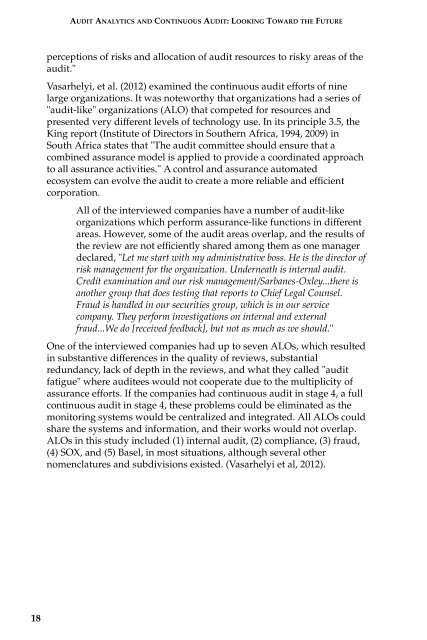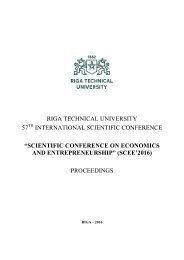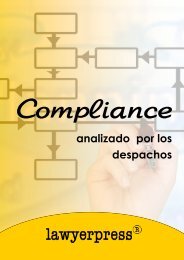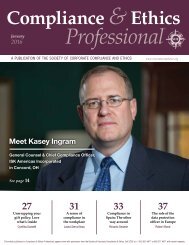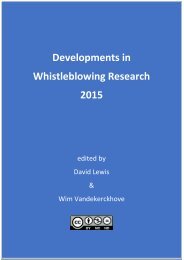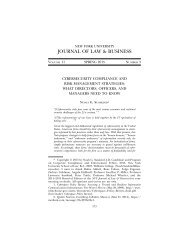AUDIT ANALYTICS AUDIT
x8YaD9
x8YaD9
- No tags were found...
You also want an ePaper? Increase the reach of your titles
YUMPU automatically turns print PDFs into web optimized ePapers that Google loves.
<strong>AUDIT</strong> <strong>ANALYTICS</strong> AND CONTINUOUS <strong>AUDIT</strong>:LOOKING TOWARD THE FUTURE<br />
perceptions of risks and allocation of audit resources to risky areas of the<br />
audit."<br />
Vasarhelyi, et al. (2012) examined the continuous audit efforts of nine<br />
large organizations. It was noteworthy that organizations had a series of<br />
"audit-like" organizations (ALO) that competed for resources and<br />
presented very different levels of technology use. In its principle 3.5, the<br />
King report (Institute of Directors in Southern Africa, 1994, 2009) in<br />
South Africa states that "The audit committee should ensure that a<br />
combined assurance model is applied to provide a coordinated approach<br />
to all assurance activities." A control and assurance automated<br />
ecosystem can evolve the audit to create a more reliable and efficient<br />
corporation.<br />
All of the interviewed companies have a number of audit-like<br />
organizations which perform assurance-like functions in different<br />
areas. However, some of the audit areas overlap, and the results of<br />
the review are not efficiently shared among them as one manager<br />
declared, "Let me start with my administrative boss. He is the director of<br />
risk management for the organization. Underneath is internal audit.<br />
Credit examination and our risk management/Sarbanes-Oxley...there is<br />
another group that does testing that reports to Chief Legal Counsel.<br />
Fraud is handled in our securities group, which is in our service<br />
company. They perform investigations on internal and external<br />
fraud...We do [received feedback], but not as much as we should."<br />
One of the interviewed companies had up to seven ALOs, which resulted<br />
in substantive differences in the quality of reviews, substantial<br />
redundancy, lack of depth in the reviews, and what they called "audit<br />
fatigue" where auditees would not cooperate due to the multiplicity of<br />
assurance efforts. If the companies had continuous audit in stage 4, a full<br />
continuous audit in stage 4, these problems could be eliminated as the<br />
monitoring systems would be centralized and integrated. All ALOs could<br />
share the systems and information, and their works would not overlap.<br />
ALOs in this study included (1) internal audit, (2) compliance, (3) fraud,<br />
(4) SOX, and (5) Basel, in most situations, although several other<br />
nomenclatures and subdivisions existed. (Vasarhelyi et al, 2012).<br />
18


